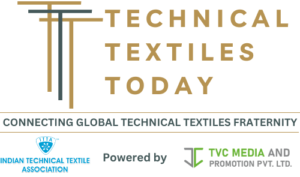India’s technical textiles sector is poised for significant growth, with a target turnover of $40 billion by 2024. The industry’s expansion is fueled by collaborations among start-ups, research institutions, and textile companies, fostering innovation and driving advancements in the field. Government initiatives, including the National Technical Textiles Mission (NTTM), play a crucial role in supporting research and development (R&D) efforts.
Dr. Arindam Basu, Director General of the Northern India Textile Research Association (NITRA), highlighted the vast opportunities in the technical textiles sector. With applications that can replace traditional materials such as metal, cement, and tar, technical textiles are gaining prominence due to their versatility and functionality. Dr. Basu emphasized that R&D and knowledge-driven approaches are the driving forces behind the expansion of this sector.
Under various government initiatives, eight Centers of Excellence for technical textiles have been established, and the NTTM is sponsoring large-scale R&D work in the field. Collaboration between renowned institutions like IITs, NITs, and Textile Research Associations (TRAs) with the industry is playing a pivotal role in fulfilling the mission’s objectives. TRAs have already successfully transferred developed technologies to the industry, showcasing the potential for further growth.
Dr. Basu also stressed the need for industry-driven R&D activities to achieve the $40 billion target. With the vast array of technical textiles available, it is essential for the industry to establish its own R&D departments. He noted that unlike conventional textile products, technical textiles do not allow for compromise on functionality, further emphasizing the significance of quality and precision in this sector.
Financial support for start-ups was deemed critical by Dr. Basu and Yatee Gupta, the founder and CEO of Fabiosys Innovations, a start-up specializing in medical textiles. Start-ups bring an innovative approach and have vast potential for growth. Gupta emphasized the rapid growth of medical textiles, particularly in segments such as anti-microbial textiles. While acknowledging the opportunities, Gupta highlighted the complexity of regulations in the industry, requiring close coordination between textile engineers and medical establishments.
Nandan Kumar, the managing director of High Performance Textiles Private Limited, highlighted the importance of high-performance fibers in technical textiles and the need for R&D and in-house testing. He noted that existing plants and machinery can be utilized with minor modifications for initial sampling and validation, allowing for cost-effective product development.
However, challenges remain for new entrants in the market. Issues of confidentiality and limited market size have made existing players hesitant to disclose their products and markets. Despite the challenges, the attractive growth prospects and high profit margins make the sector appealing to new players.
India’s focus on technical textiles, supported by collaborations, innovation, and government initiatives, is driving the growth of the textile sector. With the target turnover of $40 billion by 2024, the industry is set to play a vital role in India’s economic development while catering to diverse applications and meeting evolving market demands.
